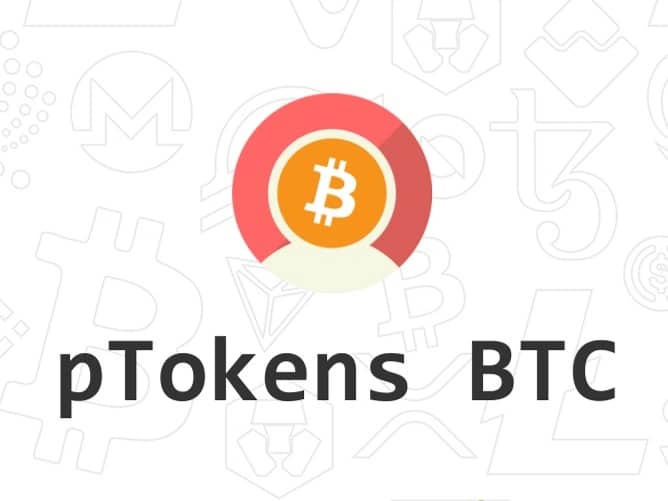Subscribe to wiki
Share wiki
Bookmark
pTokens BTC
pTokens BTC
pTokens BTC are a tool enabling cross-chain composability. It is an essential component enabling DeFi (Decentralized Finance) DApps to be compatible with any crypto asset[1][2].
The pTokens Technology was designed to overcome the inherent “walled garden” limitation of blockchain protocols. pTokens aim to solve the liquidity and interoperability riddle - a technology to connect any token with any blockchain[3].
Purpose of pTokens
pTokens enable cross-chain composability effectively. They are an essential component for DeFi (Decentralized Finance) DApps to be compatible with any crypto asset and for liquidity to move seamlessly from one blockchain to another.
Features of pTokens
pTokens (such as pEOS, pBTC and many others) are:
- Portable. pTokens can teleport any token to a different blockchain, without any frictions. Liquidity unchained.
- Pegged. Every pToken is transparently pegged to its respective token. It is a trustless 2-way peg.
- Provable. A decentralized process makes everything transparent. Anyone can peg-in/peg-out via the pTokens DApp[4].
How pTokens Tech Work
The pTokens’s infrastructure is the combination of two cutting-edge technologies: blockchain and Trusted Computing.
The pTokens technology guarantees a secure and fully auditable execution of processes. This means transparency is maintained across the whole cross-chain process.
The pTokens approach enables the decentralized cross-chain movement of Cryptocurrencies by leveraging security-preserving technologies such as Intel SGX. This, along with blockchain smart contracts, enables secure cross-chain transaction-signing capabilities between two traditionally separated blockchain platforms.
The sandboxes (TEEs) securing the pTokens infrastructure represent an additional layer of protection for the network validating the peg-in and peg-out processes.
Each sandbox (TEE) cooperates with the others to jointly validate a deposit of an underlying asset (for example BTC) and jointly trigger the issuance of the corresponding pTokens via a technique called Multi-Party Computation.
In their first iteration, pTokens are Ethereum-based ERC20-tokens pegged one-to-one to an underlying non-Ethereum cryptocurrency, such as Bitcoin or EOS. However, the model is flexible and can be extended to any blockchain, therefore enabling Ethereum-based assets such as DAI to live on platforms other than Ethereum.
Who Controls pTokens
The pTokens bridges are operated by Provable. Following a progressive decentralization approach, the governance and operations will then be shifted to a network of validators.
The pTokens bridges will be operated by the validators (multi-TEEs operators) that will take care of validating the peg-in and peg-out processes via a shared effort (Multi-Party Computation). Provable will only serve as a technology provider - as such, it will be a founding member of the network, but it will have no control over the network itself.
How to Benefit from pToken
Users can maintain their stake into a cryptocurrency or digital asset of their choice, while being able to leverage the decentralized financial system regardless of the blockchain it lives on.
Some examples:
Decentralized lending platforms are one of the most extensively used DeFi applications, offering instant access to markets for a large number of users. Their action is made effective thanks to the integration with other financial tools, including stablecoins, collateral-backed cryptocurrencies such as DAI and interest-splitting tools. However, decentralized lending platforms are limited to the native assets of the blockchain they are built on. Today, this means mostly ETH and ERC20-tokens. As a consequence, lending is restricted to a subset of assets and the platform is limited in terms of liquidity.
pTokens enable decentralized lending platforms to access the liquidity of cryptocurrencies and tokens external to the blockchain they live on. This opens the doors for Bitcoin, EOS, Tezos and Ripple among others to be lent and borrowed,. Enlarging the range of assets users can gain interest on.
Decentralized Exchanges are peer to peer and designed for crypto assets to be traded in a decentralized fashion. Again, composability is an essential element enabling DEXs to be interoperable with liquidity providers and wallets. However, like decentralized lending platforms, decentralized exchanges are limited to native assets of the blockchain they are built on. As a consequence,the trading experience is limited when compared to that of traditional centralized exchanges which offer access to the whole cryptocurrency sphere.
pTokens make the centralized trading experience decentralized. Through the use of pTokens, users gain the ability of exchanging any crypto asset in a decentralized fashion. Transparent, fully-backed and frictionless, the pTokens tool tears down blockchain walls for assets to be moved across blockchains in a seamless manner.
See something wrong?
